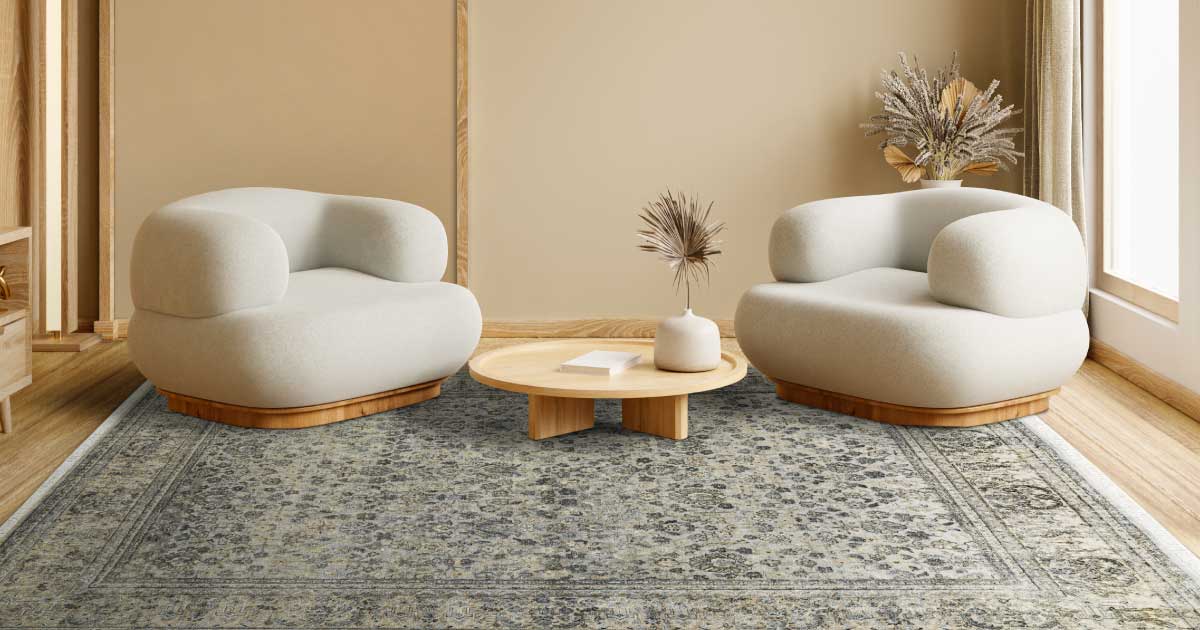
A Tale of Nomadic Weavings: Exploring the Nomadic Origins of Rugs
In the contemporary era, the usage of the term nomad has various different uses, with it being used in many different contexts. You’re a nomad if you don’t like staying in one place, static, by choice. You’re a nomad if your work requires you to travel around the world, or even in your own country. You are also a nomad if you tend to be rather open, unabashed, and free in your spirit, which doesn’t have a lot to do with you moving from one place to another, but rather concerned with the direction of your will and thoughts. Undoubtedly, the term nomad is applicable to all these contexts; however, its emergence is much deeper and utilitarian if we go back in history to understand the concept.

Nomads were people in the primitive era that traveled from one place to another in search of occupation and other resources for their livelihood. Even today, there are certain tribes in different parts of the world who move their homes from one region to another. Kela community of Bengal, Bharwad of Gujrat, Gandhila of Punjab, Haryana, and Uttar Pradesh are some of the nomadic tribes in the Indian subcontinent.
Nomadic lifestyle
The beauty of constant motion, the celebration of dynamism, and the essence of liberty and relying on oneself, are all factors that popularised this lifestyle even in the décor industry. Many who do have not enough knowledge about its emergence tend to believe that in the context of home décor, the theme is supposed to resonate with the souls who believe in consistently moving places. Contrary to this popular belief, the theme is actually about the essence of celebrating change. It is about defying the notion of permanence and stability which is considered the most ideal form of living to date. It appeals to individuals who believe in stepping out of a bubble and exploring this planet that we call home. Beyond brick and mortar, the nomadic lifestyle is about exploring what home really means to us. Home doesn’t have to be a dwelling with walls, floor, and roof. It can just as well be a city, a person, or a spot we came across while walking in the streets, reminding us of our most fond memories.
Nomadic weaving
Let us delve a little bit into history and how this lifestyle really began to popularise in the carpet weaving industry.
Hand-knotted carpets were woven and designed all over the world. It is a common notion that almost all antique rugs, especially the pile rugs were crafted in Persia and Turkey. It is true that the oldest rugs known to history are the Persian rugs, but it is less likely that the craft was first developed in only Persia. Carpets were crafted by artisans who knew the skill of weaving.
Nomadic tribes for whom the primary resource of income was generated through raising sheep, would craft marvellous furnishings known as woven pile rugs. Often referred to as pile carpets, these rugs are a substitute for furry hides or sheepskins. Their function is associated with insulation and comfort as well as décor. Such woven versions of hides evolved for a variety of reasons. Like by shearing the animals and weaving the rugs out of the wool, it was no longer necessary to kill the animals and it became possible to make them into a piece of decoration.
Though the nomadic art of weaving began during the 13th century, it started to become popular in the late 14th century. This was the time when various Turkish nomadic tribes started to build villages and settle down. They established small towns and a weaving factory from where the 1st rugs were taken to adorn the Ottoman court. Later on, these rugs were gifted to the key members of the kingdoms in European countries by the Ottoman court to retie their relationships post-war. Towards the end of the 14th century, these rugs which were the finest examples of comfort and visual appeal, began to enter European homes, churches, and castles through intermediaries. In the 19th century, additional court workshops were opened in Istanbul. Throughout their development, carpets woven through nomadic weave styles reached from Central Asia. Through the Ottoman era, these rugs have maintained the purity and characteristics of their origin.
The lifestyle of nomads is another factor that led to the spread of their weaving style. Since they traveled so much, they used to live in tents. These tents were woven by them by hand. This allowed fine nomadic Turkish weave styles to become known by the European populace. A short time thereafter, the kings and queens all across the globe started adorning their residences with fine Turkish weaves.
Seeking inspiration from a few of the finest tapestries in the history of nomadic carpet weaving like the Pazyryk rug, we at Obeetee Carpets have been crafting the finest works of art since the past century. In our eclectic collection, you will find rugs made with new-zealand wool, adding that nomadic touch to your carpet and making it durable. Along with our weaving techniques, each design adorning these masterpieces portrays traditional patterns like Persian motifs and flashes of the olden era.
It's not just us who can seek inspiration. You as consumers indirectly use carpets like nomads. From adorning your living spaces, using them as a floor covering or a tapestry to using them as wallpaper, carpets not only insulate your home from various weather conditions but provide you with visual comfort. In one way, that nomadic culture is embedded into all of us through the great art of carpet weaving.
Rugs and carpets are a staple in our homes today because of the everlasting air aestheticism they add to our home décor. Though today, these furnishings are easily accessible, say around 30-40 years back you would be surprised to know that it was not a common thing to adorn one’s home with carpets, especially the exquisite ones from the nomadic weave. They were considered to be a symbol of social status and were believed to be accessible only by a few influential homes and owners. However, today we live in the 21st century, and accessibility, affordability, and craftsmanship have propagated throughout the world. In India itself, we can find carpets with intricacy, elegance, and craftsmanship similar to the nomadic hand-knotted carpets.
Buy the best handmade rugs online- https://www.obeetee.in/









